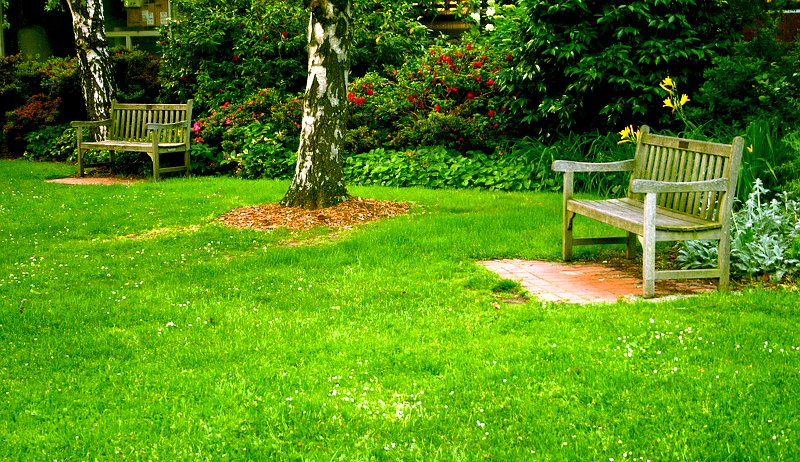
Any homestead or garden on a sunny site will look even prettier if surrounded by a collar of bright green turf. Here are a few tips to keep your lawn looking good without too much work.
Water To The Wise
Irrigating a lawn is time-consuming, and you probably need the water for marketable crops anyway. If your lawn has been suffering, look for alternative grasses that might be better adapted to your conditions.
Cool Clips
If you have a cool-season grass that does well in the northern half of the country, such as fescue or Kentucky bluegrass, set the mower as high as it will go or at least 3 inches. Taller shoots mean deeper roots, and bigger plants will shade out more weeds.
Warm Tips
If you’re growing a warm-season grass that does well in the southern half of the country, such as Bermuda, centipede, St. Augustine or zoysia, your lawn will do better if mowed to a height of 2 inches to force side shoots.
Slow Goes It
If you have a lawn of slow-growing native buffalo grass, that does well in the drier parts of the country—precipitation of less than 25 inches per year—mow it at 4 to 6 inches about twice a month.
Let It Go
Don’t bag the clippings: That’s just more work. Whether you have a mower that shreds the clippings or not, they will shrivel in the sun, drop down to the soil, be devoured by microbes and supply about a third of the nitrogen your lawn needs in a process called grass-cycling. Don’t waste time or money by bagging up and throwing away all that free fertilizer.
Jump The Clumps
If your mower throws out big clumps of clippings, just run over them again to scatter them. You’re still saving time over dealing with bagged clippings.
Achieving Balance
Be cautious when applying fertilizer. Yes, a lot of nitrogen will create deep-green, fast-growing grasses, but like a child on too much sugar, it will also make your lawn susceptible to diseases and bugs. Because you should be leaving clippings to feed the lawn, only apply about half the recommended rate of fertilizer. A bag with 18 percent nitrogen is plenty.
Neutral State
Adjust the pH to an optimal level near neutral of 6 or so. You don’t have to wait until fall to apply lime if a soil test says your soil is too acidic. In fact, you can make use of the ashes from your woodstove as a free substitute for lime. Pound for pound, wood ash is about a third as strong as lime.
Seed As You Please
Depending on your location, there are optimal times of year to overseed. But that doesn’t mean you have to wait. Anytime you see bare spots in the lawn, throw some grass seed down. Otherwise, weeds will get there first.
They say the gardener’s footprints are the best fertilizer for the garden, and the same could be said of lawns. So now that things have warmed up, kick off your shoes and enjoy that verdant lawn.
This story first appeared in the May/June 2017 issue of Hobby Farms.




